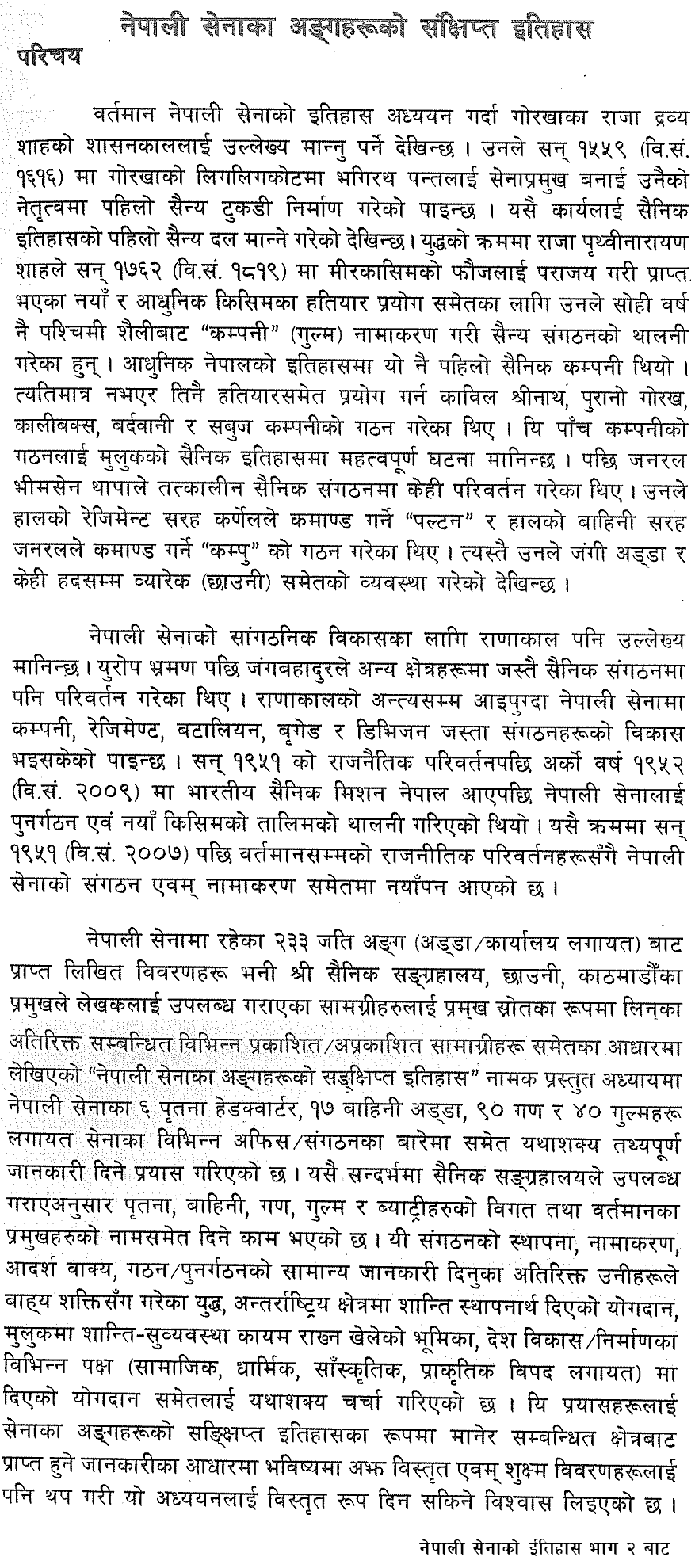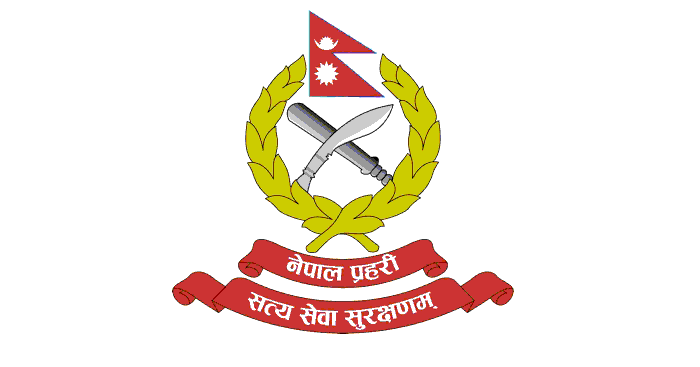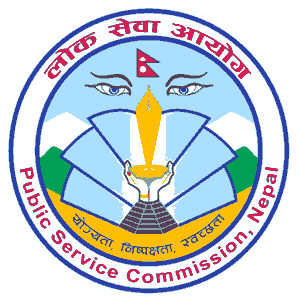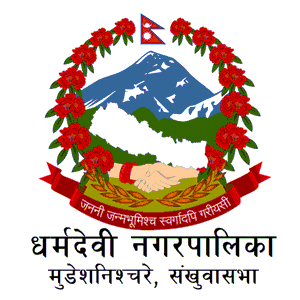Overview
Nepal Army (Nepali Sena) is the oldest organization among the proud organizations of the nation of Nepal. With the history of this country, the history of the Nepalese army begins. It has its own characteristics. Over time, this organization changed and modified itself to become the 'Nepali Army' today.
Nepalese army is the oldest army in South Asia, this army was formed at the beginning of the unification of Nepal. Its founder was King Prithvi Narayan Shah. The head office of the Nepali Army (Nepali Jangi Adda) is located in Bhadrakali, Kathmandu. In addition, the Nepali Army Pritana headquarters are located in Itahari, Hetaunda, Valley (Singh Durbar), Pokhara, Surkhet, and Dipayal in the east, Bahini, Gana, and Gulms of the Nepali Army are located in all parts of the country.
This organization has earned the highest reputation and fame by following the orders of the government from the beginning of its history till today by being diligent, loyal, patriotic, and dutiful towards the nation.
A Brief History of the Nepal Army:
Studying the history of the present Nepal Army, it seems that the reign of Dravya Shah, the king of Gorkha, should be considered significant. He appointed Bhagirath Pant as the army chief in Ligligkot of Gorkha in 1559 AD (1616 AD) and built the first military unit under his leadership. This seems to be the first military operation in military history. During the war, King Prithvinarayan Shah defeated Mir Qasim's army in 1762 AD (1819 BS) and started the military organization in the same year by naming it "Company" (Gulm) from the Western style. This was the first military company in the history of modern Nepal.
Not only that, Kavil Srinath, Old Gorakh, Kali Baksh (Kalibox), Vardwani and Sabuj companies were formed to use the same weapons. The formation of these five companies is considered an important event in the country's military history. Later, General Bhimsen Thapa made some changes in the then military organization. He formed a "platoon" commanded by the colonel like the current regiment and a "compu" commanded by the general like the current force. He also seems to have set up a battlefield and, to some extent, a barracks.
The Rana period is also considered significant for the organizational development of the Nepal Army. After his visit to Europe, Jung Bahadur made changes in the military organization as in other areas. By the end of the Rana period, the Nepal Army had developed organizations such as companies, regiments, battalions, brigades and divisions. After the political change of 1951, in the next year 1952 (2009 BS), when the Indian military mission came to Nepal, the Nepalese army was reorganized and a new type of training was started. In this context, along with the political changes that have taken place since 1951 BS (2007 BS), there has been a novelty in the organization and naming of the Nepal Army.
A brief history of the organs of the Nepal Army, based on various published / unpublished materials, in addition to the materials provided to the author by the head of the Shree Sainik Museum, Camp, Kathmandu as the main source of written descriptions from 233 organs (including bases/offices) in the Nepal Army. In this chapter, an attempt has been made to give as much factual information as possible about the various headquarters of the Nepal Army, 17 bases, 90 battalions, and 40 battalions as well as various offices/organizations of the army. In this regard, as provided by the Military Museum, the names of the past and present heads of the Pritana, Bahini, Gana, Gulma, and Badi have also been given. Apart from giving general information about the establishment, naming motto, formation/reorganization of these organizations, their wars with external forces, their contribution to peace in the international arena, their role in maintaining peace and order in the country, various aspects of country development/construction (social, religious, cultural, Contributions to natural disasters have been discussed as much as possible.
The Nepal Army has played a major role in establishing peace even in some of the most remote and unfavorable places. In particular, the role of war-torn African countries in maintaining peace at the local level is commendable. Even at the risk of their lives, Nepali soldiers are efficiently involved in the UN Mission.
Nepal Army Rank Structure:
According to the Interim Constitution of Nepal 2063, the President is the Commander-in-Chief of the Nepali Army. The President mobilizes the army on the recommendation of the National Security Council headed by the Prime Minister.
The military structure is led by the Chief Senapati Maharathi. Just below him are two Rathi. After that, in order, Uparathi, Sahayakrathi, Mahasenani, Mukhya-Senani, Senani, Saha-Senani, Upa-Senani and Sahayak-Senani are the ranks above the officer level. Below the officer is the post of Chief Subedar, Subedar Major, Jamdar, Hudda, Amaldar, and Pyutha.
| Nepali Army Officer Ranks |
| Officer Cadet (अधिकृत क्याडेट) |
| Second Lieutenant (सहायक सेनानी) |
| Honourable Lieutenant (मानार्थ उप सेनानी) |
| Lieutenant (उप सेनानी) |
| Honourable Captain (मानार्थ सह-सेनानी) |
| Captain (सह-सेनानी) |
| Major (सेनानी) |
| Lieutenant Colonel (प्रमुख सेनानी) |
| Colonel (महासेनानी) |
| Brigadier General (सहायक रथी) |
| Major General (उप रथी) |
| Lieutenant General (रथी) |
| COAS General महारथी (प्रधानसेनापती) |
| Nepali Army Other Ranks |
| Followers (फलोअर्स) |
| Private (सिपाही) |
| Lance Corporal(प्यूठ) |
| Corporal (अमल्दार) |
| Sergeant (हुद्दा) |
| Warrant Officer Second Class (जमदार) |
| Warrant Officer First Class (सुवेदार) |
| Subedar Major (प्रमुख सुवेदार) |







